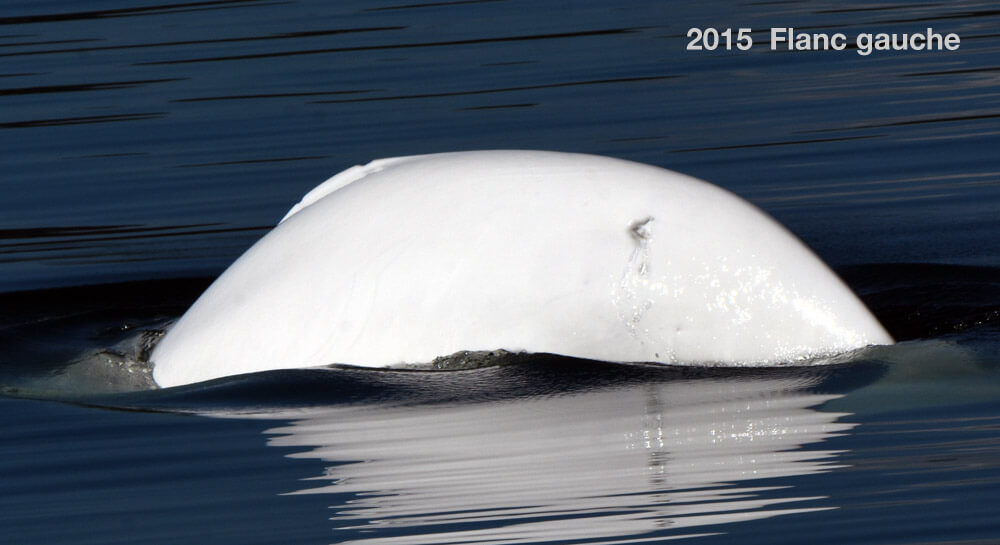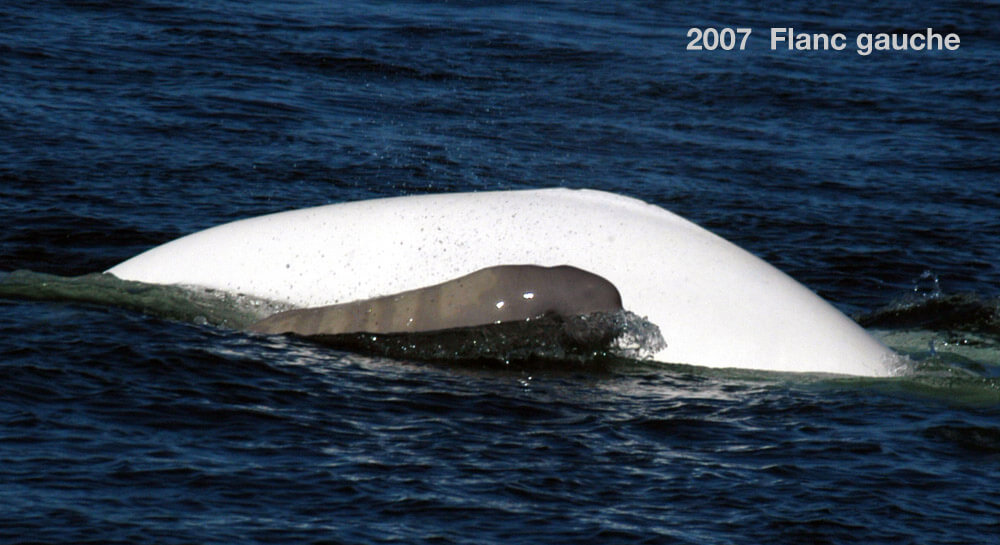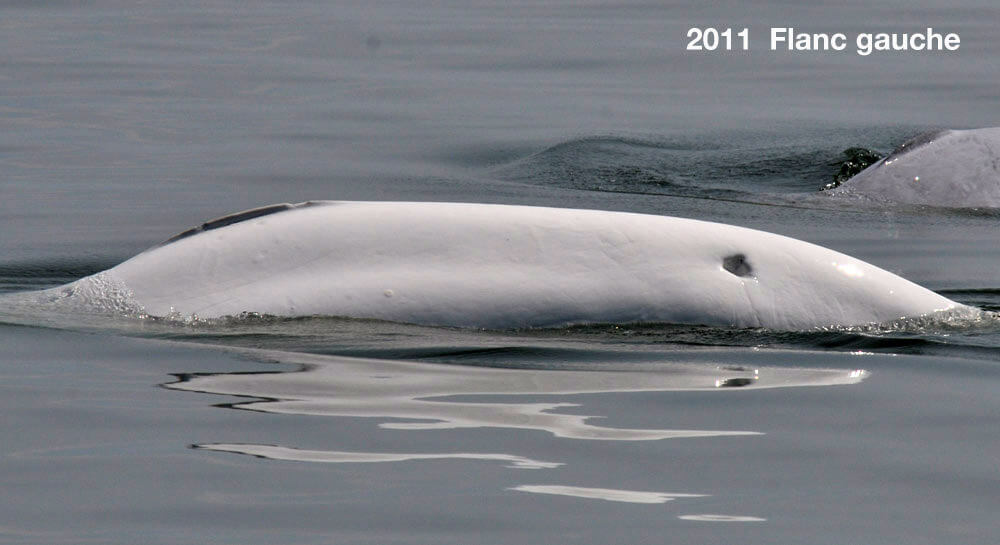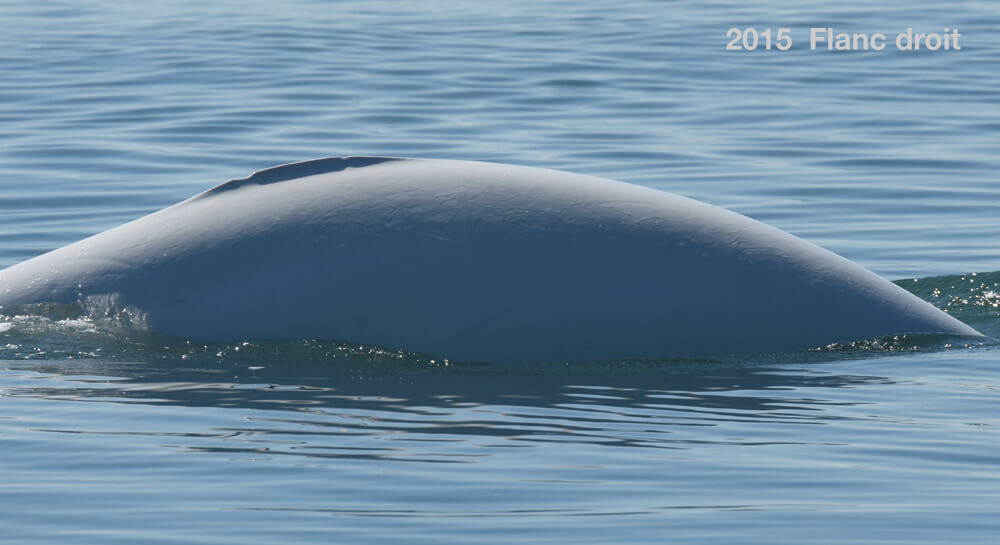Bleuoutremer
Beluga


Adopted by Bleuoutremer
-
ID number
DL1688
-
Sex
Unknown
-
Year of birth
Before 1984
-
Known Since
2000
Distinctive traits
DL1688 can be recognized by the deep, arrowhead-shaped scar on its left peduncle.
Life history
I first met DL1688 in 2000. It was already white. We cannot determine it exact age. Beluga whales change color from gray to white between the ages of 12 and 16. We can therefore confirm that DL1688 was born before 1984.
DL1688’s small size and the company it keeps lead us to believe that it is female. In the summer range, females form large communities in which they look after newborns and young. These communities are attached to traditional territories and there is little exchange between them.
DL1688 belongs to the Saguenay community. It has been observed with other known females such as DL2273, DL0553, Pascolio and Marjo. DL1688 is regularly observed in groups including newborns. In 2004, it was observed with a calf that appeared to be its own.
Following its story will help us to better understand the social and reproductive life of belugas. By understanding how belugas live, we can better protect them.
Observations history in the Estuary
Years in which the animal was not observed Years in which the animal was observed
Latest news
And off we go for a day of photogrammetry! Thanks to our super drone, we can take excellent photos of the belugas from the air to measure their waist size. In this way, we hope to gain an insight into the health of the animals, and even monitor the pregnancy of females. The weather is just right for flying the drone – the wind is barely blowing. Aboard the Bleuvet, off the coast of Tadoussac, we find a herd of around forty belugas. Young greys and adults swim in six small groups. Our search assistants coordinate: we need to photograph the belugas from the flanks at the same time as we photograph them from the air, to increase our chances of recognizing them. The drone takes off, flying over a beluga with a deep scar near the base of its tail. It’s Bleuoutremer! Then the drone starts making a funny noise. One of the propellers stops flying. No! The drone nose-dives and crashes into the water. It sinks instantly, taking all the photos taken today with it… We’ll have a photo of Bleuoutremer from the air some other time.
We’re on our way to the lighthouse at Cap de la Tête-au-Chien aboard the BpJAM, our inflatable research vessel. It’s early afternoon and conditions are favourable, with light wind and good visibility. We spot a small herd of 4 or 5 individuals, take a few photos and then spot another group, this one numbering nearly a dozen animals. Half the belugas still have grey skin, an indication that they are relatively young. Two large females are swimming among them: Bleuoutremer and Nomi. The wind begins to pick up. We photograph a few more belugas. By around 2:30, the waves become more intense. After we’ve had enough of being rocked about in our small boat, we decide to return to our home port of Tadoussac.
We are near the north shore in the middle estuary between Baie-Saint-Paul and Tadoussac. Visibility is perfect. We recognize DL1688 among a herd of about ten individuals, adults and young. They are all close to the coast and are swimming in single file towards the upper St. Lawrence. At the end of the line, we recognize Pascolio, a matriarch from our photo-identification program. After an hour of observation, other animals join our herd to form a larger herd of about 20 animals.
Sponsor
Bleuoutremer adopted DL1688 and named it Bleuoutremer (2018).





